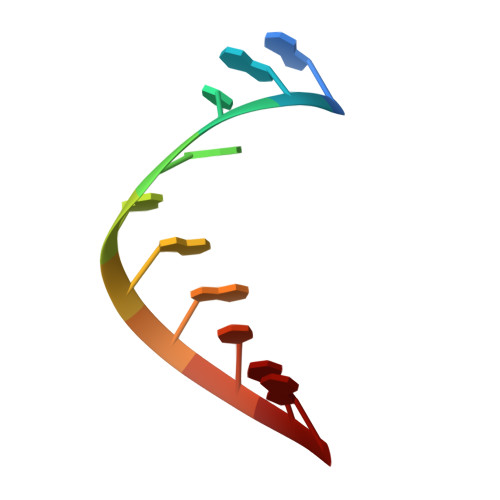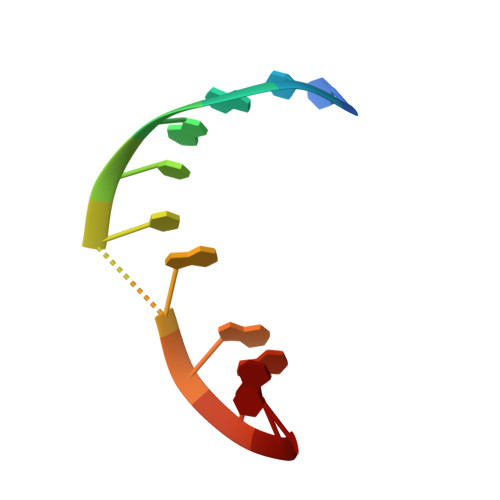Structure-guided engineering of the regioselectivity of RNA ligase ribozymes.
Pitt, J.N., Ferre-D'Amare, A.R.(2009) J Am Chem Soc 131: 3532-3540
- PubMed: 19220054
- DOI: https://doi.org/10.1021/ja8067325
- Primary Citation of Related Structures:
3FS0, 3FTM - PubMed Abstract:
Ribozyme-catalyzed RNA synthesis is central to the RNA world hypothesis. No natural RNA polymerase ribozymes have been discovered. However, ribozymes that catalyze the requisite chemistry, generating a new phosphodiester through attack of a terminal hydroxyl of an RNA on the alpha-phosphate of a triphosphate-activated oligonucleotide, have been isolated by in vitro selection. These experiments often yield ribozymes that generate 2'-5' phosphodiesters rather than conventional 3'-5' linkages. We have determined crystal structures of the duplex formed by the template segment of a representative 2'-5' RNA ligase ribozyme, the class II ligase, and its ligation product. The structures reveal a product-template duplex with a G x A pair at the ligation junction. This sheared pair is flanked on one side by a minor groove-broadening wedge comprised of two unpaired nucleotides. The reported structure of an independently isolated 3'-5' ligase ribozyme, the L1 ligase, shows a product-template duplex that shares the G x A pair with the class II ligase. However, this G x A pair is flanked by G x U wobbles, rather than an unpaired wedge. We demonstrate that these structural differences of the substrate-template duplexes are largely responsible for the divergent regioselectivity of the two ribozymes, independent of their catalytic moieties, by constructing chimeras. The L1 ligase with a class II substrate-template duplex shows a 30-fold increase in 2'-5' bond synthesis, while the class II ligase with an L1 substrate-template duplex produces 3'-5' bonds exclusively. These results demonstrate how local geometry inherent to the substrate-template duplexes controls the regioselectivity of ribozyme-catalyzed RNA ligation reactions.
Organizational Affiliation:
Molecular and Cellular Biology Program, University of Washington, Seattle, Washington 98195, USA.
















